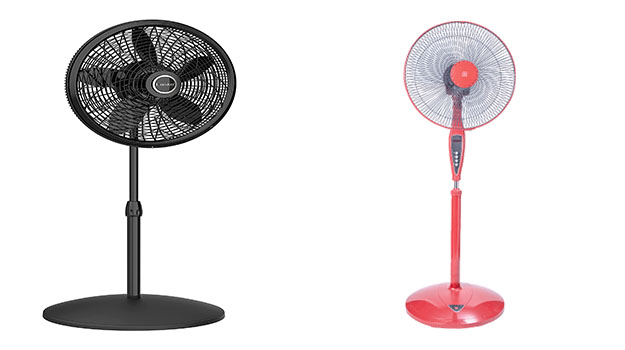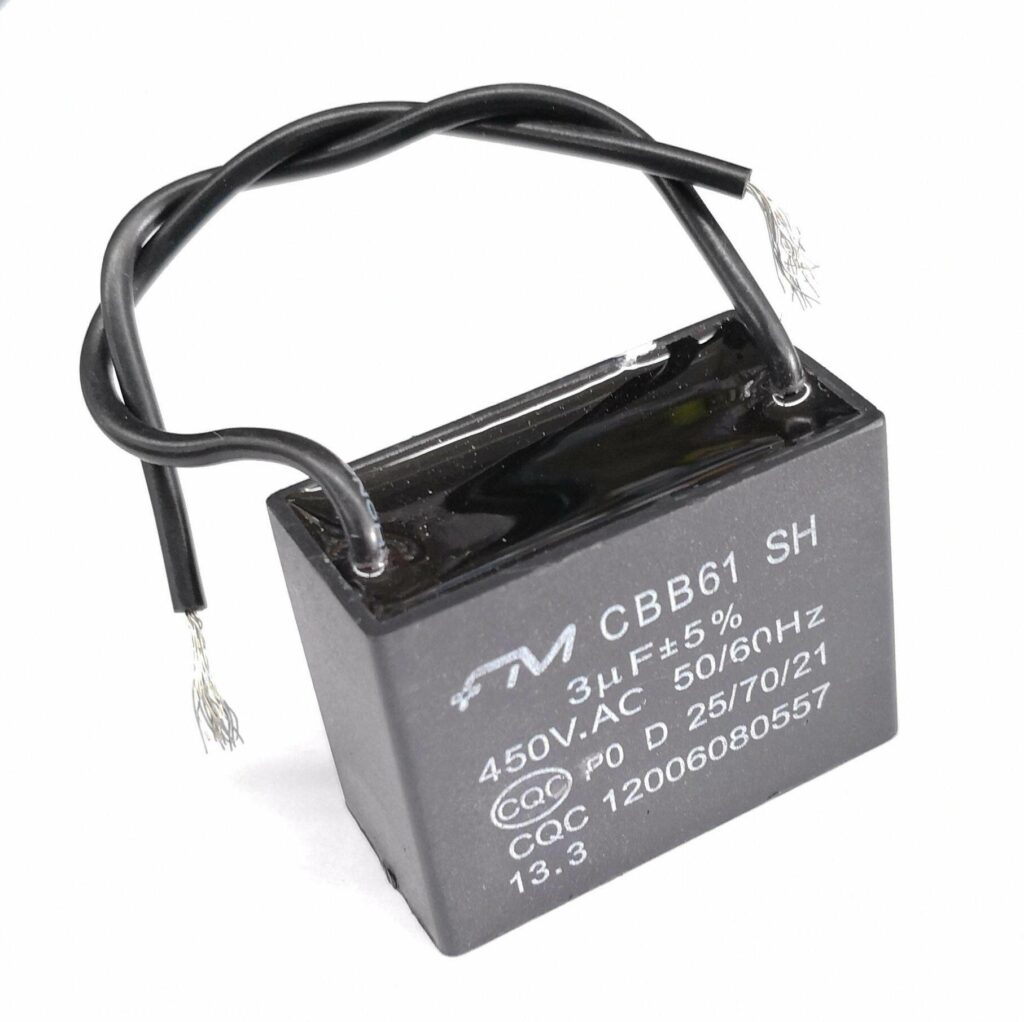
The fan is an important part of your home’s cooling system. It not only provides you with comfort but also helps keep the house at a comfortable temperature by circulating airflow through its blades! It doesn’t matter what kind of fan you have, either a stand, tower, or ceiling fan. They have been an essential part of the household. The black box inside each centrifugal switch housing of the standing fan contains what we call “capacitors,” which affect how fast or slow it turns.
A ceiling fan is a self-starting machine with a single phase induction motor. A capacitor attached to the inside of this device creates a rotating magnetic field, which starts up and runs smoothly. When we remove the capacitor from a standing or ceiling fan, the capacitor creates a pulsating magnetic field that is unable to rotate the motor.

The most common way to power stand and ceiling fans is with two capacitors in parallel. The motor is also referred to as a “permanent split capacitor motor” or a “two value capacitor run motor.” In this instance, a high capacitance capacitor will be connected to the split phase induction motor, starting the winding. The running winding employs an additional capacitor with low capacitance.
The purpose of a capacitor on an electric motor is to create electrical energy in order for it runs. In this way, when you have multiple windings with a single phase, AC induction motors and capacitors are used as well. Just like the name sounds, a single-phase induction motor on your ceiling fans will have the same phase shift. This means that it’s only run by electricity from your wall and not on its own power supply like most other types of ceiling fan motors do nowadays!
Can You Run Your Stand or Ceiling Fan?
Technically, yes. The blades on a ceiling fan can be turned to rotate in any direction using a manual process. This is useful if you plan on running without a capacitor installed. However, this could be very time consuming and a hassle for you. The capacitor in a ceiling fan or stand fan motor makes the blades turn by themselves.
What Happens if there is No Capacitor Connected to Your Fan Motor?
The absence of a capacitor in the ceiling fan’s winding will produce pulsating magnetic field instead of a rotating magnetic field that is needed enough energy to create magnetic torque and rotation.
The bypass capacitor is the first line of defense in the circuit. It prevents any surges or voltage fluctuations from damaging your device and ensures that everything will stay running smoothly. The best way to keep your power supply from drooping is with an automatic energy storage system. With these systems, you can avoid those pesky voltage spikes. Without a capacitor, Some circuit boards are more sensitive than others. They can’t handle the small fluctuations intemp or voltage from outside sources, which would lead to instability and even damage over time if left unchecked!
But not all types of fan needs a capacitor. For example, exhaust fans do not need a capacitor because they are small and balanced enough. Some table fans have them, and some don’t. To create more airflow and keep you cool, some table fans come with a capacitor. The way it works is by creating magnetic flux, which makes the fan rotate!
Can a Capacitor in a Ceiling Fan or Stand Fan Increase the Fan Speed?
As the capacitance of a fan rises, its voltage and, therefore, speed also increases. You must increase capacitor value in order for your fans to operate at full capacity.
What is a Bypass Capacitor?
Capacitors are used to reduce noise on your power supply lines of the ceiling fan or stand fan. Connecting one between the GND pin and the ground reduces any static or interference that may enter into what you’re trying.
Do Single-Phase Motors Need Capacitors?
During the normal operation of a ceiling fan, some single-phase AC motors require an extra capacitor to start the second phase of auxiliary winding.
Last Updated on
- Exhaust fan vs Ventilation Fan - September 20, 2022
- Can a Standing Fan Work Without Capacitor - September 16, 2022
- Table Fan vs Stand Fan - September 13, 2022
